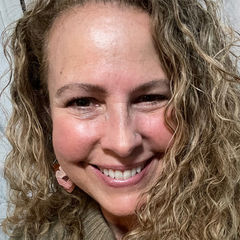
Are you one of the 431 million people who use Pinterest every month? If so, are you using Pinterest for your next DIY project—or are you harnessing its power to scale your business? If you’ve never thought about using this platform as part of your marketing plan, it’s time you start using this powerful marketing tool.
Why Pinterest?
Pro Tip 1: Catch Those Emails!
No matter what platform you’re using, they could go down temporarily—or shut down for good—and you would lose everything you had on them—including your audience. That’s why it’s imperative to always drive traffic somewhere you can catch their email addresses to build your email list and protect your business.
I’ll be honest. I avoided using Pinterest for years. It wasn’t that I didn’t like it. Quite the opposite. It was so tempting to get lost in the beautiful photographs and Pins and before I knew it, several hours had passed.
This is also what makes Pinterest a great marketing tool!
If you’re unfamiliar with Pinterest, think of it as a big virtual bulletin board or vision board. Pinners are what the platform’s users are called, and they have their own bulletin boards within the larger board. Pinners create Pins and post (or Pin) them to their boards. The Pins contain some sort of content, whether a statistic, a list, a question, a topic, a DIY tip—anything that could pique another person’s interest and make them want to click the link on the Pin. The links take you to websites, blogs, social media pages or storefronts. The boards are organized according to topic, which makes it easy for other Pinners to find the content related to their search.
While many consider Pinterest a social media platform, there are some stark differences between Pinterest and other social media, such as Facebook and TikTok. According to Pinterest, “People aren’t here to fend off FOMO [fear of missing out] or [to] doomscroll. They’re here to try new things. To save new ideas. And often, to make their next purchase.”
431 million people use Pinterest every month
83% of weekly U.S. Pinners have made a purchase based on Pins from brands
45% of people in the U.S. with a household income of over $100K are on Pinterest
Women make up about 60% of the global Pinterest audience
97% of top Pinterest searches are unbranded
80% of weekly Pinners have discovered a new brand or product on Pinterest
Source: Pinterest
“Pinterest is really a search and discovery network, actually closer to a Google, a YouTube or even a Twitter since people search it for real-time information,” explains Neal Schaffer, educator, speaker, consultant and author of The Age of Influence (HarperCollins Leadership, 2020). “Pinners are not on Pinterest to chat with friends or make relationships with influencers. They are searching for solutions or inspiration.”
Jen Vazquez, Pinterest and marketing strategist, and producer for her “Marketing Strategy Academy” podcast adds, “While Pinterest is certainly not a traditional search engine like Google, it does contain many elements of a search engine, which is why Pinterest and Pinterest experts like myself say that it’s a visual search engine. In fact, Pinterest is the third most powerful search engine, just behind Google and YouTube.”
Most people who go to Pinterest go with the intent to search for something, says Corbin White, owner of Zoco Marketing. “This separates Pinterest from other social media platforms because your content is searchable; meaning, if you produce a piece of content, it has the opportunity to get consistent views through months and even years. Posts on other social media platforms usually only have a 24- to 72-hour shelf life.”
“Some of my Pins are still driving traffic to my website six years later,” concurs Vazquez. “In fact, Pinterest consistently brings 70 to 85% of my traffic compared to other social media platforms.”
Pinterest Brings Business Directly to You
Pro Tip 2: Repurpose Your Content
Time is money. Use it wisely by using one piece of content for several purposes. For example, all or part of one blog post can become a podcast, an email for your list, and a social media post or Pinterest Pin. “Consider taking all the content you create for Pinterest, resize it via Canva, and use it as a carousel on Instagram and other platforms like Facebook and LinkedIn,” suggests Vazquez.
Because you can directly link each Pin to something else—your website, virtual storefront, social media page, blog, podcast—your Pins act like a pipeline to direct potential customers and clients to your products and services pages where you can start to nurture them.
“Pinterest helps to build that know-like-trust factor—the process that potential clients need to go through when booking services,” says Vazquez. “Someone searches for a subject and finds your content. They read the description and want to know more and click through to your blog post or services page. This encourages reaching out to you to work with you if they like what they read.”
Because Pinterest is about search and discovery, it can generate traffic to your website, says Schaffer. “Getting people to click back to your website from a TikTok or even an Instagram [post] can be challenging because that is not what the social network was built to do. That’s why, if your business matches the Pinterest demographic, it can be an exciting social network that can generate a lot more traffic and, therefore, more leads and sales.”
What is the Pinterest demographic? According to Statista, a 2021 survey of Pinterest users in the United States found that 32% were 18 to 29 years old, 34% were 30 to 49 years old, and 38% were aged 50 to 64 years old. How much money do these Pinners make? According to this same survey, 40% of Pinterest users make $70,000 or more.
Like any other marketing method, not every type of Pin performs well. “Right now, Pinterest really seems to be pushing video content,” says White. “I have been seeing a lot of success with Pinterest ‘Idea Pins’ that use video.”
Vazquez agrees and recommends doing one Idea Pin a week, based on a blog post or to tell a story. “In terms of impressions, brand awareness and follows, Idea Pins—formerly called Story Pins while in beta—is the way to go. They can be up to 20 pages of video, images or graphics. Consider an idea to inspire, tell a story or [present] how-to type of content. That does the best on Pinterest.”
While Idea Pins don’t include a link to anything outside of Pinterest, they do link to your Pinterest profile page. “And they live forever on your profile, so they are great for attention-grabbing, but won’t directly generate traffic,” says Schaffer.
Since users are taken to your profile page when they click an Idea Pin, you want to make sure your profile is set up so that other users can easily find the link to your website or a product or services page. This is key to helping them find your business outside of Pinterest, whether you’re using Idea Pins or not.
Vazquez says that just behind Idea Pins, the next best option is video Pins. “Video—like all social media platforms—is where it’s at. But just like all social media platforms, you [ideally] want a [multi-channel] approach and use all types of Pins.”
Schaffer also recommends clearly showing in your Pins that you are providing a solution to your ideal clients' problems. “I think the Pins that would draw the most traffic are those that are based on search intent, and in the image or video of the Pin clearly show that they have the solution to what people are looking for,” he says.
While colors, fonts and images can certainly be a reason people would click on a Pin, Schaffer says he would be more likely to click on the Pin with the text that is closest to the solution that he’s looking for. This isn’t to say, however, that color and font don’t matter. “As with any social network, Pinterest marketing should be done with A/B testing, because even changing the color of your image can affect the click rate of how many website hits a unique Pin generates,” Schaffer says.
If you’re using Pinterest for business, you’ll want to have a Pinterest business account. It’s free and, as White says, “it gives access to more analytics and there really isn’t any downside from my experiences.”
“I always recommend that my clients either change their personal Pinterest over to a business account or start a separate business Pinterest account,” advises Vazquez. “But if you change from a personal account over to business, you’ll need to ‘secret’ personal boards. Pinterest looks at your profile, the profile description, and the boards and Pins as a whole to decide who you service and how you can help people, so they can then serve your information up to your ideal clients.”
Is Pinterest any good to you if you don’t yet have a website? “Having a website is not necessary,” says Vazquez. “Entrepreneurs with a YouTube channel or podcast do well also. You can also share certain types of affiliate links and lead magnets.”
White, however, recommends having a website to take advantage of Pinterest’s potential. “You can certainly build an audience following without a website on Pinterest and use that audience to cross-promote and grow your other social media channels. But for most people, if you want to maximize the potential of Pinterest, I recommend [having] a site.”
If you’re not using Pinterest for business yet, it’s never too late, says White. “There is never a better time to start than today. If you’re on the fence, just start posting. You’ll never be ‘ready,’ so just start.”





 by
by 


